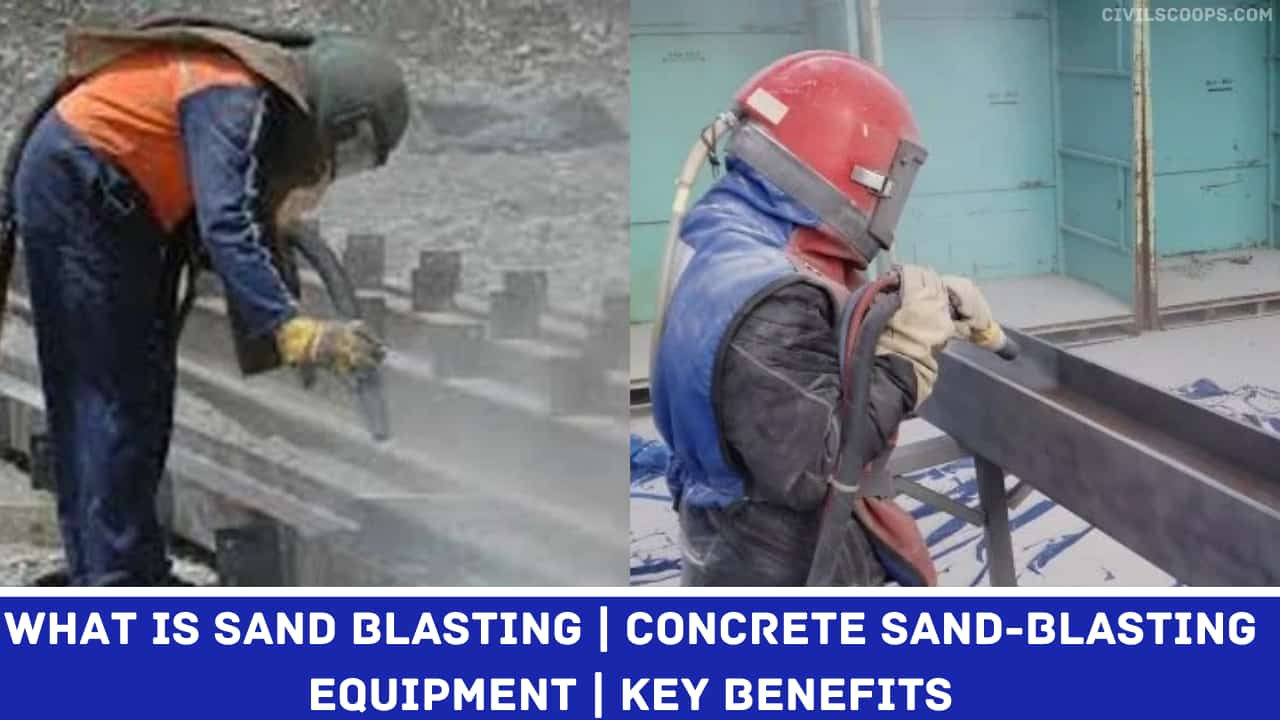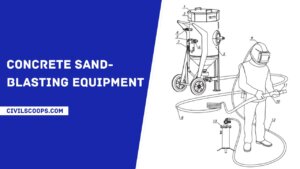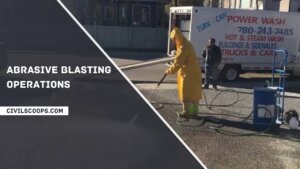What Is Sand Blasting | Concrete Sand-blasting Equipment | Key Benefits of Sand Blasting

Table of Contents
What Is Sand Blasting?
Commonly called abrasive blasting, grit or sand-blasting can be used to expose the aggregates inside a hardened concrete, giving it a rustic also attractive look, by eroding the surface layer.
There are four typical grades of abrasion, with each one producing a matt finish featuring textures varying from these resembling sand-paper (brush blasting) to more coarse textures (light blasting) and blasting, which exposes large amounts of aggregate (medium, heavy blasting).
Throughout the process, the colour of the cement will initially dominate, and then the sand colour will progressively show with the coarse aggregates being revealed during thick and medium sand-blasting.
or
Sand-blasting is one of the most efficient procedures of cleaning stone, wood, metal, and other solid surfaces. It employs the usage of compressed air to project sand and other granules in a target.
This removes dirt, grime, and all finishes nearly instantaneously. A sandblaster has the ability to restore a surface to the original bare condition with minimal effort.
Even though convenient, treating concrete using a sandblaster requires detailed preparation and protective measures.
Concrete Sand-blasting Equipment

- Cover
- Screen
- Machine Tank
- Pressurizing Ball Valve
- Upper-Air Line Ball Valve
- Moisture and Oil Separator
- Lower Air Line Ball Valve
- Abrasive Blasting Hose
- Operator Helmet
- Nozzle Holder
- Nozzle
- Breathing Air Hose
- Breathing Air Filter
Preparation for operation of Sand Blasting
- Ensure that the compressor is positioned out of the abrasive blasting operation zone on the downwind side.
- Start the compressor and increase pressure and temperature up to operational values.
- Open lower ball valve at compressed machine air-line (the handle of the open valve should be parallel to the compressed air-line).
- Open the tank venting ball valve.
- Close compressed air feed ball valve (upper ball valve on this compressed air-line).
- Close metering valve FSV by setting adjusting handle in the central position.
- Connect the compressed air hose to the coupling of the machine. Compressed air hose diameter should be at least 0.5″. Lock hose coupling with safety wire or clip.
- Connect abrasive blasting hose to hose the coupling of the machine. Lock hose coupling with safety wire or clip.
- Fill the machine tank with abrasive.
- Put protective equipment on.
Abrasive Sand Blasting Operations

- Feed compressed air to the machine inlet.
- Machine Maximum Operating Pressure — 10 Bar.
- Close the pressurizing ball valve.
- Upon the signal of this abrasive blasting operator open the ball valve and feed compressed air to the machine line. This tank is pressurized. Only compressed air is expelled from the nozzle.
- Adjust metering valve FSV to provide an optimal air-abrasive mixture. The general rule for abrasive blasting operations: the less abrasive you use, the better.
- To stop operation, close the compressed air feed ball valve and then immediately open the pressurizing ball valve to relieve pressure from your tank.
Where Can You Use Regular Sandblast Finish Concrete?
Here, the list of Regular Sandblast Finish Concrete required.
- Concrete Steps
- Concrete Walls
- Concrete Pillars
- Concrete Patios
- Concrete Walkways
- Concrete Driveways
- Concrete Pool Decks
Key Benefits of Sand Blasting
There are key benefits to sand-blasting concrete as an alternative to traditional surface restoration procedures:
- It ensures even concrete finishes in the consistency of their cement and stone ratio in comparison to using conventional procedures.
- Sandblasting is a far more affordable and time-efficient solution than the cost involved with ripping up the concrete, disposing the debris, and then adding a new layer of concrete.
- Its technology uses compressed air to project abrasive material in the concrete for exposed aggregate, hence avoiding irreparable damage to the surface.
- Pro Strip Sandblasting can effectively and economically restore concrete to its original surface condition with minimal effort for the preparation of further treatment.
[su_box title=”FAQ” style=”default” box_color=”#333333″ title_color=”#FFFFFF” radius=”3″ class=”” id=””]
What Is Sand Blasting?
Abrasive blasting, more commonly known as sandblasting, is the operation of forcibly propelling a stream of abrasive material against a surface under high pressure to smooth a rough surface, roughen a smooth surface, shape a surface or remove surface contaminants.
What Is Sandblasting Used For?
Sandblasting can remove paint, rust, and residue from oxidation from materials quickly and efficiently. Sandblasting can also be used to change the condition of a metal’s surface, such as through removing scratches or casting marks. Sandblasting as a cleaning method has been widely used for over a hundred years.
Sand Blasting Process on Steel
This method involves mechanical cleaning by the continuous impact of abrasive particles at high velocities on to the steel surface. This is either in a jet stream of air or water as the most common method.
Is Sandblasting Dangerous?
Abrasive blasting with sands containing crystalline silica can cause serious or fatal respiratory disease. The National Institute for Occupational Safety and Health (NIOSH) requests assistance in preventing silicosis and deaths in workers exposed to respirable crystalline silica during sandblasting.
Sandblasting in Dentistry
Dental sandblasting provides an alternative to the typical drilling method of removing tooth decay. When filling a cavity, the dentist normally uses a drill to reach the affected area and remove all bacteria. The air abrasion technique essentially does the same job as cavity drilling, just in a different way.
[/su_box]
[su_note note_color=”#F2F2F2 ” text_color=”#333333″ radius=”3″ class=”” id=””]
Like this post? Share it with your friends!
Suggested Read –
- What Are Washers Used for ?
- Building Estimation Step by Step In Excel Sheet
- Road Gradient | Type of Gradient | All Gradient Advantages and Disadvantages
- What Is Veneer | What Is Laminate | Veneer VS Laminate | Difference Between Veneer and Laminate
- What Is Geodetic Surveying | What Is Plane Surveying | Geodetic Surveying Vs. Plane Surveying | Difference Between Plane Surveying and Geodetic Surveying
[/su_note]
Originally posted 2022-07-08 08:42:13.
